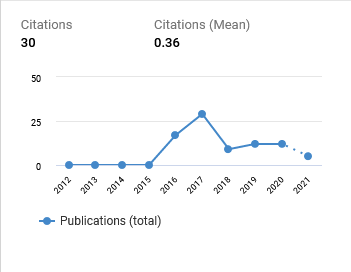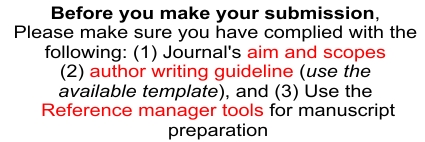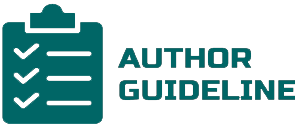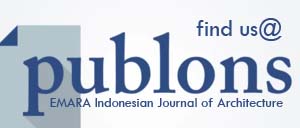Resilient Communities and Context-Specific Policies
Shaping Urban Environments in Banjarmasin's Slum Areas
DOI:
https://doi.org/10.29080/eija.v9i1.2100Keywords:
urban slumps, low-income communities, Residential preferences, community resiliences, context-specific policiesAbstract
This study examines Banjarmasin City's low-income slum residents' views and housing preferences. To fully grasp their lives is the goal. This study seeks to explore the numerous elements affecting these communities' residential decisions and objectives. Additionally, it investigates the viability of implementing setting-specific urban policies and interventions. Our study used systematic review and thematic content analysis. Our 16 sources included qualitative investigations, quantitative surveys, and policy publications. Our study covers demographics, slum living, residential preferences, economic limits, health risks, and natural disaster susceptibility. This study highlights the resilience of the people, their desire for better housing, the economic constraints of informal employment, the health risks of inadequate sanitation, and their susceptibility to natural disasters. The study's use of ambitious goals and community-based solutions sets it apart from prior research. Access to work is also a major factor in residential preferences, especially in Banjarmasin. This study enhances our understanding of urban life in slums and emphasizes the need for situation-specific urban policy. Our research suggests community-driven projects have great potential, emphasizing the need for localized solutions. This work advances urban planning and development by allowing low-income communities to shape their own futures. Future research should examine the long-term consequences of localized initiatives and the scaling possibilities of community-driven development strategies in urban areas.
Downloads
References
Arvidsson, C., Sentama, E., & Ewald, J. (2019). Empowerment of Women through a Colourful slum-project [Bachelor thesis, Linnaeus University]. http://lnu.diva-portal.org/smash/get/diva2:1328740/FULLTEXT02.pdf
Butala, N. M., VanRooyen, M. J., & Patel, R. B. (2010). Improved health outcomes in urban slums through infrastructure upgrading. Social Science & Medicine, 71(5), 935–940. https://doi.org/10.1016/j.socscimed.2010.05.037 DOI: https://doi.org/10.1016/j.socscimed.2010.05.037
Chugh, S. (2011). Dropout in Secondary Education: A Study of Children Living in Slums of Delhi. https://www.semanticscholar.org/paper/Dropout-in-Secondary-Education%3A-A-Study-of-Children-Chugh/a9d56d29abf79f1d400aec1fa82790d956cbbd15
Gholib, A. (2020). Settlement Arrangement in the Kampung Seng Area, Blitar City. REVITALISASI : Jurnal Ilmu Manajemen, 8(1), Article 1. https://doi.org/10.32503/revitalisasi.v8i1.869
Hasnaine, M. S. (2011, October 25). Socio-Economic Condition and Rehabilitation Potential of Housing. https://www.semanticscholar.org/paper/Socio-Economic-Condition-and-Rehabilitation-of-Hasnaine/273d8fe06b58f7a71c4129859785db19b13d225a
Heryana, A., Setyawan, D., Setiawan, B., & Purnama, D. (2015). Flood Hazard Analysis as Impact of Climate Change on Slum Areas in Palembang, South Sumatera. Journal of Sustainable Development, 8(1), Article 1. https://doi.org/10.5539/jsd.v8n1p218 DOI: https://doi.org/10.5539/jsd.v8n1p218
Jackson, M. R. (2020). Creative Placemaking and comprehensive community development: Rethinking neighborhood change and evaluation. In The Routledge Handbook of Placemaking (1st ed.). Routledge.
Kondapi, A., Kumar, T., Sait, U., Bhalla, K., & Ashok, S. S. (2019). A case-study of slums: An informal housing for people below poverty line (BPL) in India. Journal of Physics: Conference Series, 1343(1), 012152. https://doi.org/10.1088/1742-6596/1343/1/012152
Krstic, I. (2016). Slums on Screen: World Cinema and the Planet of Slums. Edinburgh University Press. DOI: https://doi.org/10.3366/edinburgh/9781474406864.001.0001
Lanjouw, P., & Shariff, A. (2004). Rural Non-Farm Employment in India: Access, Incomes and Poverty Impact. Economic and Political Weekly, 39(40), 4429–4446.
Lin, C. S.-M., Ye, L., & Zhang, W. (2020). Working Paper: Transforming informal work and livelihoods in China. UNU-Wider. http://www.wider.unu.edu/publication/transforming-informal-work-and-livelihoods-china
Loretta, L., Bang, S., Hyun, & Morales, E. L. (2015). Global Gentrifications: Uneven Development and Displacement. Policy Press.
Morgner, C., Ambole, A., Anditi, C., & Githira, D. (2020). Exploring the Dynamics of Social Networks in Urban Informal Settlements: The Case of Mathare Valley, Kenya. Urban Forum, 31(4), 489–512. https://doi.org/10.1007/s12132-020-09389-2
Nugroho, A. R., Ritohardoyo, S., Muta’ali, L., & Hasibuan, H. S. (2019). Citizen Preference on Arrangement of Slum Area in Banjarmasin Riparian Zone. IOP Conference Series: Earth and Environmental Science, 313(1), 012027. https://doi.org/10.1088/1755-1315/313/1/012027
Okaka, F. O., & Odhiambo, B. D. O. (2019). Health vulnerability to flood-induced risks of households in flood-prone informal settlements in the Coastal City of Mombasa, Kenya. Natural Hazards, 99(2), 1007–1029. https://doi.org/10.1007/s11069-019-03792-0
Opoko, A. P., Ibem, E. O., & Adeyemi, E. A. (2015). Housing aspiration in an informal urban settlement: A case study. Urbani Izziv, 26(2), 117–131. DOI: https://doi.org/10.5379/urbani-izziv-2015-en-26-02-003
Roy, A. (2005). Urban Informality: Toward an Epistemology of Planning. Journal of the American Planning Association, 71(2), 147–158. https://doi.org/10.1080/01944360508976689 DOI: https://doi.org/10.1080/01944360508976689
Roy, D., & Lees, M. (2020). Understanding resilience in slums using an agent-based model. Computers, Environment and Urban Systems, 80, 101458. https://doi.org/10.1016/j.compenvurbsys.2019.101458
Shrivastava, R., Choudhary, A. K., Nagar, J. K., & Kaushal, R. (2016). A cross-sectional study to assess health status of children in urban slum in Sagar city. https://www.semanticscholar.org/paper/A-CROSS-SECTIONAL-STUDY-TO-ASSESS-HEALTH-STATUS-OF-Shrivastava-Choudhary/420749351b451c19f70967ce187c88a5f9542cfd
Ssemugabo, C., Nalinya, S., Lubega, G. B., Ndejjo, R., & Musoke, D. (2021). Health Risks in Our Environment: Urban Slum Youth’ Perspectives Using Photovoice in Kampala, Uganda. Sustainability, 13(1), Article 1. https://doi.org/10.3390/su13010248
Tewari, S. (2005). Gender Discrimination Among Children in Urban Slums. The Anthropologist, 7(4), 247–252. https://doi.org/10.1080/09720073.2005.11890916 DOI: https://doi.org/10.1080/09720073.2005.11890916
Trindade, T. C. G., MacLean, H. L., & Posen, I. D. (2021). Slum infrastructure: Quantitative measures and scenarios for universal access to basic services in 2030. Cities, 110, 103050. https://doi.org/10.1016/j.cities.2020.103050
Turok, I., & Borel-Saladin, J. (2018). The theory and reality of urban slums: Pathways-out-of-poverty or cul-de-sacs? Urban Studies, 55(4), 767–789. https://doi.org/10.1177/0042098016671109 DOI: https://doi.org/10.1177/0042098016671109
UNDP. (2019). Human Development Report 2019: Beyond Income, Beyond Averages, Beyond Today - Inequalities in Human Development in the 21st Century. United Nations.
UN-Habitat. (2016). World Cities Report 2016: Urbanization and Development—Emerging Futures. UN Habitat. https://unhabitat.org/world-cities-report-2016
Vijay, D. (2017). Falling Poverty, Rising Privations: Trends over a Quarter Century in a Slum and a Village near Delhi. Indian Journal of Public Administration, 63(4), 595–615. https://doi.org/10.1177/0019556117726823 DOI: https://doi.org/10.1177/0019556117726823
Vikalista, E., & Warsono, H. (2023). Realizing an Inclusive City in Banjarmasin Based on Disability Community with Local Government Synergy. 3(3), 243–252. https://doi.org/10.31098/bmss.v3i3.669
Widiati, I. R. (2018). Application of GIS in the spatial analysis to assessing the infrastructure dynamics of slum in Papua, Indonesia. 2017 Second International Conference on Informatics and Computing (ICIC), 1–6. https://doi.org/10.1109/IAC.2017.8280654 DOI: https://doi.org/10.1109/IAC.2017.8280654
World Bank Group. (2017). World Development Report 2017: Governance and the Law. World Bank Publications.

Downloads
Published
How to Cite
Issue
Section
Categories
License
Copyright (c) 2024 Arfiani Syariah, Muhamad Ratodi, Septia Heryanti

This work is licensed under a Creative Commons Attribution-ShareAlike 4.0 International License.
- Authors retain copyright and grant the journal right of first publication with the work simultaneously licensed under a Creative Commons Attribution ShareAlike License that allows others to share the work with an acknowledgment of the work's authorship and initial publication in this journal.
- Authors are able to enter into separate, additional contractual arrangements for the non-exclusive distribution of the journal's published version of the work (e.g., post it to an institutional repository or publish it in a book), with an acknowledgment of its initial publication in this journal.
- Authors are permitted and encouraged to post their work online (e.g., in institutional repositories, pre-print sites, or on their website) prior to and during the submission process, as it can lead to productive exchanges, as well as earlier and greater dissemination of published work.
































